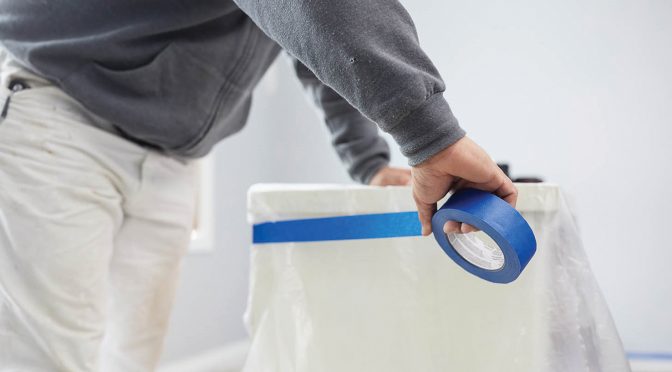Prepping the job site properly means your customer’s home will be protected — and so will your reputation.
When you’re on the job, you have care, custody and control of your customers’ property, and they rely on you to protect their home and valuables while you work.
So it’s crucial to make a good impression by showing respect for their house and belongings – your good reputation depends on it. That means properly prepping the job site, even before you begin sanding, patching and painting.
Here are a few tips to keep your customers’ property protected.
Your first rule of thumb: If it doesn’t get painted, move it or cover it
Any furniture, appliances, lamps, and decorations that can be removed should be. Take pictures with your smartphone before moving anything to help you remember where furnishings should be placed when you reassemble the room.
When it comes to highly expensive items—fine art or a piano, for example— always check with the homeowner before moving them, if they’re able to be moved at all. Sometimes homeowners prefer high-value belongings to be left in place.
If possible, light switch and receptacle plates should be removed along with door and window hardware, door knobs, door bolt plates, striker plates, locks, etc. and any other removable hardware.
Cover anything that can’t be moved
Lighting fixtures at the center of a room are a good place to start — cover these with plastic film. Use production-grade tape when securing film-to-film. Save the multi-surfaces tapes for masking walls, windows and other surfaces that need to be protected.
Furniture and other large pieces that can’t be taken out of the room should be grouped near the center of the space to allow access to the walls and ceiling and covered with lightweight plastic sheeting. Face furniture inwards so that homeowners and visitors are discouraged from sitting, keeping the furniture protected for the entire paint job.
Protecting the floors
Wipe off or vacuum the floor surface near the walls to remove residual dust and dirt so the tape sticks correctly. Use a tape suitable for hardwood floors, or any production or multi-surface tape on carpet.
After taping, cover the remaining floor with plastic film or canvas drop cloths. You can also use masking paper on adjacent floors when painting, or you can attach paper or plastic sheeting with tape.
Masking other surfaces
For surfaces like mirrors, countertops, vanities and sinks, masking with paper or lightweight plastic will keep the protected from paint spatter. Production-grade tape is best for securing paper to paper and plastic to plastic. Save the multi-surfaces tapes for walls, trim and other surfaces where paint lines matter.
When precision counts
Mask with premium painter’s tape when sharp lines matter. For example, baseboards and trim, switches and hardware that can’t be removed, adjoining walls of differing colors, windows, cabinets and backsplashes. FrogTape® Painter’s Tape is treated with a patented PaintBlock Technology® that forms a barrier when it comes into contact with moisture, preventing paint bleed and ensuring clean, sharp lines.
This article was developed for PPC magazine by ShurTech Brands, LLC, maker of FrogTape® brand painter’s tape. Get more expert job site advice from ShurTech in our article 3 Proven Strategies for Avoiding Callbacks.

